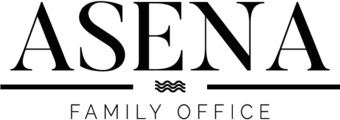Risk assets have continued rising, driven primarily by expectations for expansionary monetary policies accompanied by extra blasts of liquidity. Meanwhile the yield on the 10-year Swiss government bond has slid to an all-time low of -0.75%. This has sent investors rushing into peripheral Eurozone bonds to glean whatever semblance of yield that they can find. As a result, the returns on Italian government bonds are in free fall despite the country’s budgetary woes. Portugal is borrowing out to 2024 at negative rates. The US is resuming trade talks with China – news which is underpinning stocks around the world. An American delegation heads to Shanghai this week.
The ECB last Thursday left the rate on its deposit facility unchanged at -0.4% but mooted a possible cut in the cost of borrowing in the near future. Actions in this upcoming phase of monetary easing could range from more bond purchases to sliding-scale interest rates. During the press conference that followed the governors’ meeting, ECB boss Mario Draghi offered a relatively candid view of the Eurozone economy, flagging a few areas of strength despite the souring outlook. The job market is in fine form, reflected by an unemployment rate that has ebbed to a cyclical low of 7.5%. This, in turn, is underpinning consumer spending. By contrast, the state of Eurozone industry is steadily worsening as shown by the continued slowdown in manufacturing. Sentiment among German business leaders has hit its lowest ebb since 2014. Yet this does not necessarily mean that a recession is in the pipeline. The ECB may opt to trim by only 10bp when it meets on 12 September.
In the US, GDP rose at an annual rate of 2.1% in the second quarter, which was better than expected. That was mainly thanks to consumer spending, which surged by 4.3%. Capital expenditure and the residential sector tended to hold growth back. Growth is slowing in tandem with shrinking business investment. All in all, the data are neither good nor bad and, hence, unlikely to change the Fed’s stance when it announces its upcoming rate decision. It is expected to cut its target range to 2.0-2.25% on 31 July.
On the corporate front, reporting season is in full swing. To date, the numbers have been on the reassuring side. Of the 205 S&P 500 firms that have released figures, close to 80% have beaten EPS estimates. For revenues, this figure is 59%.
If you have any questions please contact the office on (03) 9670 6070.
